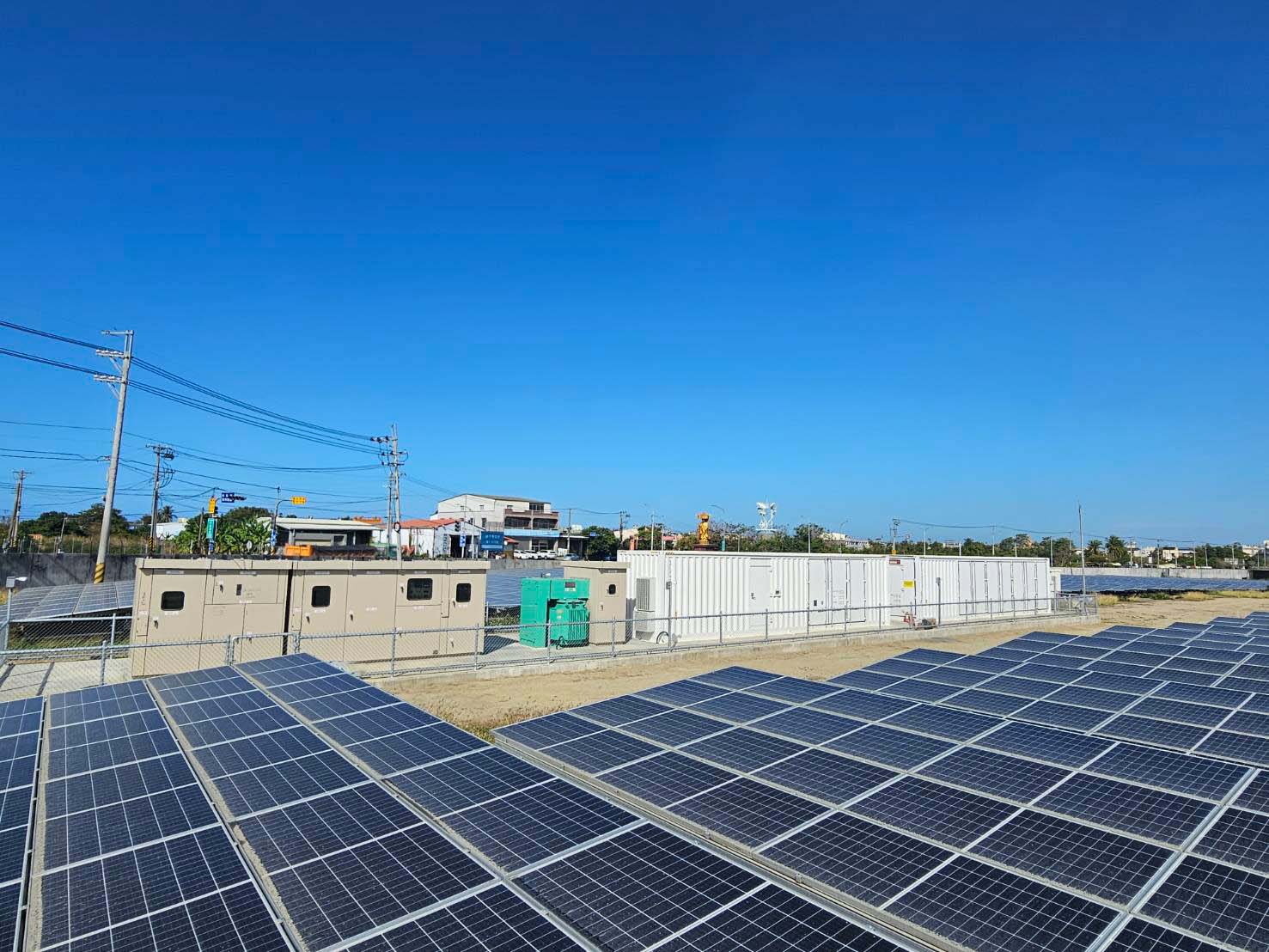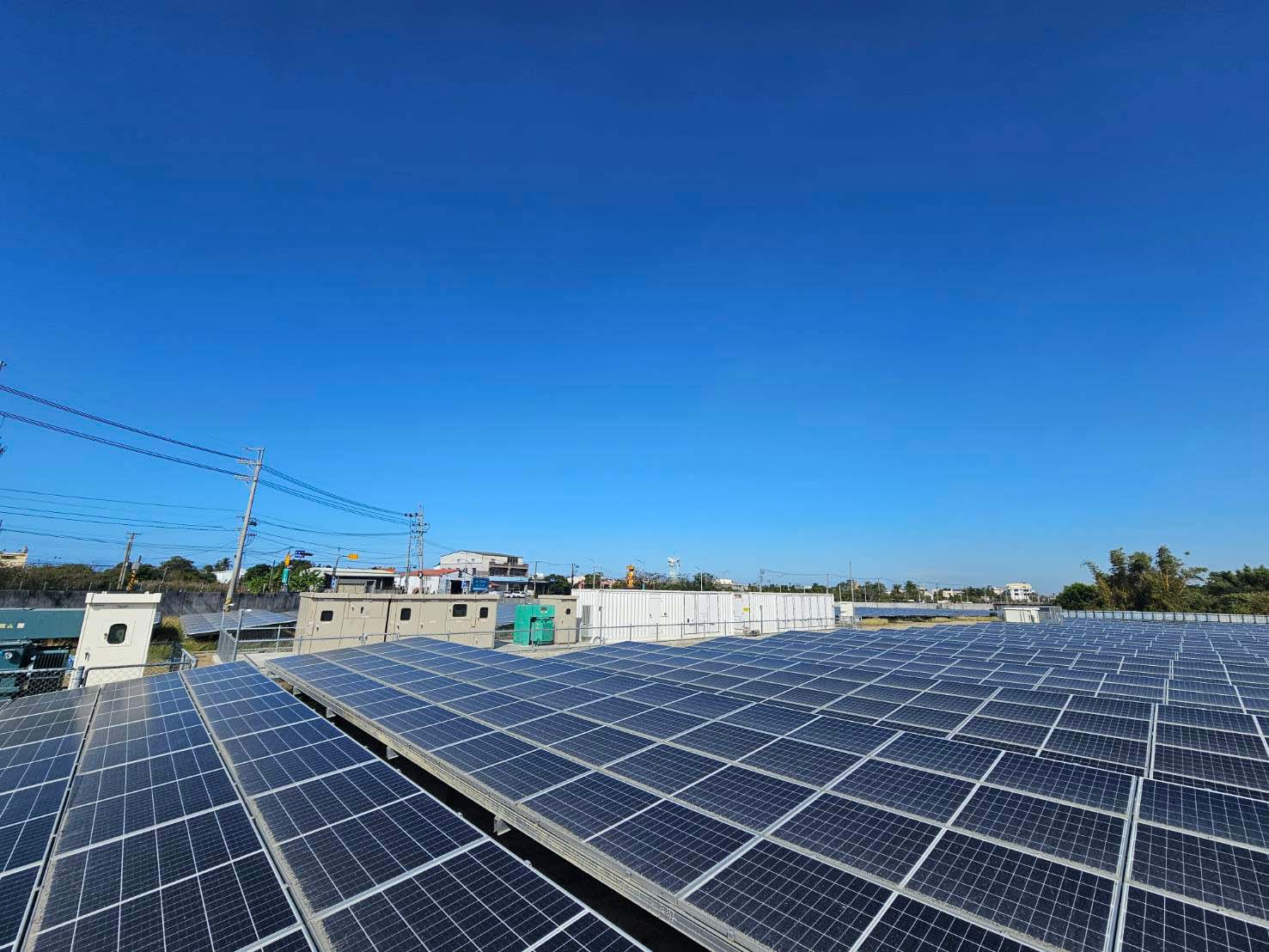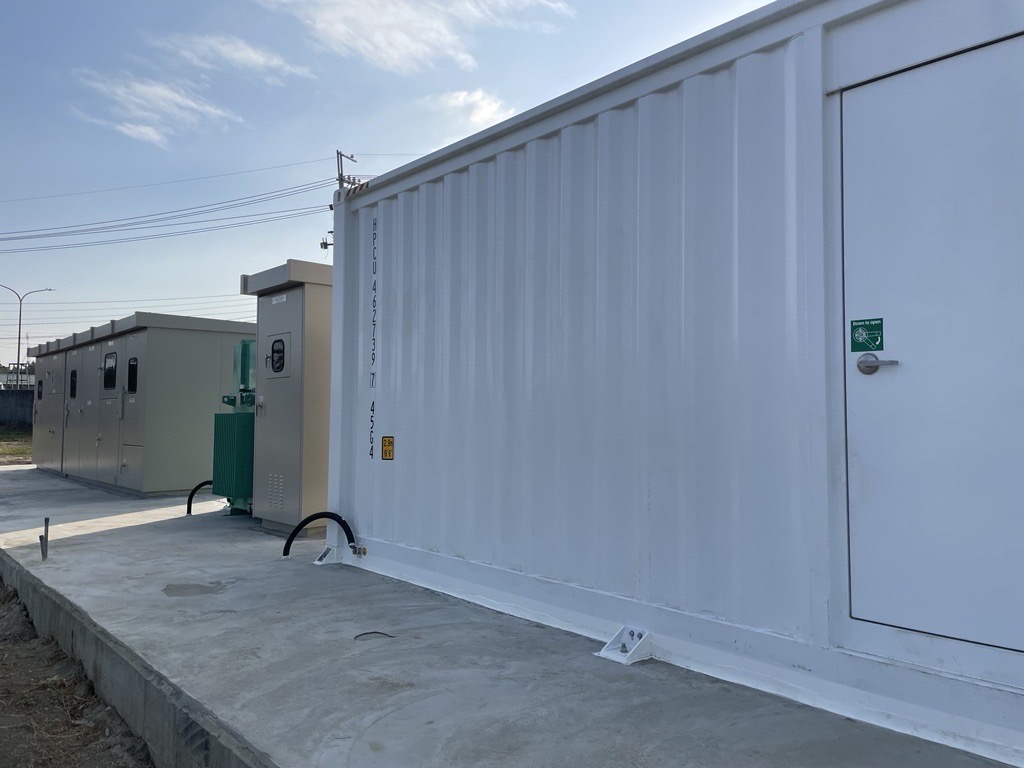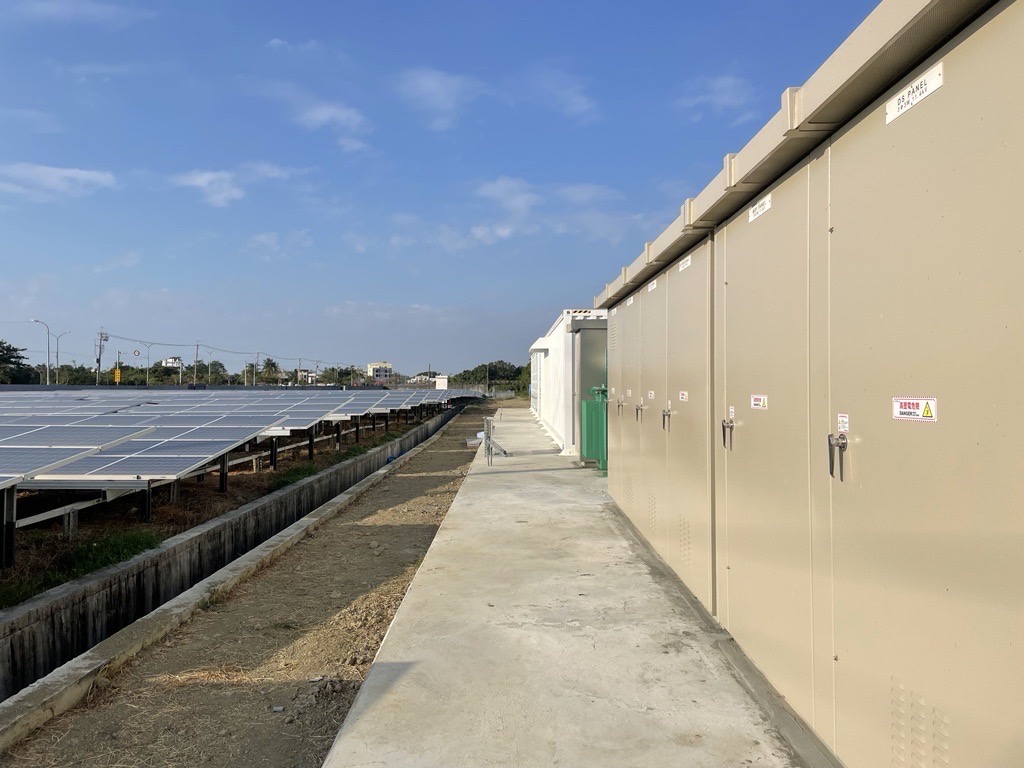Project Overview
A common challenge in renewable energy development is the limited availability of feeder lines. To address this and maximize feeder line utilization, the government introduced the “2022 Guidelines for Solar PV System and Energy Storage System Bidding and Capacity Allocation” (ROC Year 111), aiming to promote the integration of solar PV with energy storage systems (ESS).
NGP participated in the Bureau of Energy’s “PV + ESS Bidding Service” and implemented the Kaohsiung Mituo solar-plus-storage project. Following the successful launch of Taiwan’s first shared substation in 2023, NGP once again assumed a pivotal role in Taiwan’s renewable energy transition as one of the country’s first companies to integrate solar PV with energy storage systems.
The full-scale construction of the Mituo solar-storage project began on November 21, 2023, and achieved grid connection approval (Taipower meter installation) on January 23, 2024.
This project is not only among the first solar-plus-storage installations in Taiwan but also the first ESS project approved by the Bureau of Energy to be located outside an existing solar PV site. Since existing regulations did not specify whether ESS must be located "within" or "outside" the boundaries of existing PV installations, NGP proactively engaged with the Bureau of Energy and related agencies. As a result, new administrative guidelines were established to clarify this distinction, setting a precedent for future solar-storage integration projects.
NGP partnered with Digi Triumph Technology, one of the few firms in Taiwan with experience in building large-scale energy storage systems. The ESS solution utilizes LiFePO₄ battery arrays designed by Taiwan’s Foxlink, manufactured at their facility in Houli, Taichung. The power conversion system (PCS) is supplied by Destine Power, the world’s third-largest PCS provider. SEEC, a domestic leader in power equipment, provided the design and manufacturing for the outdoor HV/LV switchgear and transformers.
The project’s storage system is configured at 1MW/2.9MWh, designed according to the Bureau of Energy’s output-to-capacity ratio of 1:3, with a lifespan exceeding 20 years. Foxlink’s innovative battery module design minimizes heat buildup, significantly reducing air conditioning energy consumption.
Safety is a top priority. The fire suppression system includes Spain-imported HFC227ea clean agent, and each container is equipped with flammable gas detectors tailored for lithium batteries. If gas levels rise above safety thresholds, the system automatically shuts down to prevent accidents.
All equipment and construction comply with Taipower’s standards, utilizing components certified by IEC, UL, and TÜV Rheinland, and in accordance with regulations related to occupational safety, health, and environmental protection. Throughout construction, there was zero environmental or community impact, and the project was completed with zero workplace safety incidents, thanks to strict oversight and control measures.
By aligning with government efforts to integrate ESS with solar PV, NGP is helping to mitigate the intermittency of solar power, optimize energy storage utilization, enhance feeder capacity during nighttime grid feeding, and accelerate the deployment of solar-plus-storage systems. This project reflects NGP’s ongoing commitment to Taiwan’s green energy policies and to long-term sustainable development.



